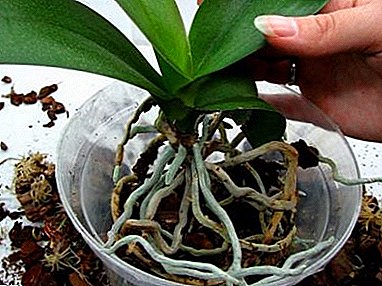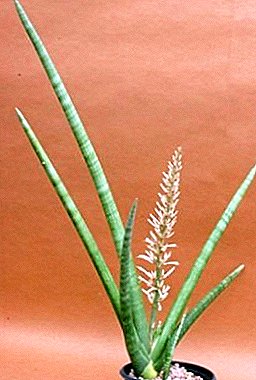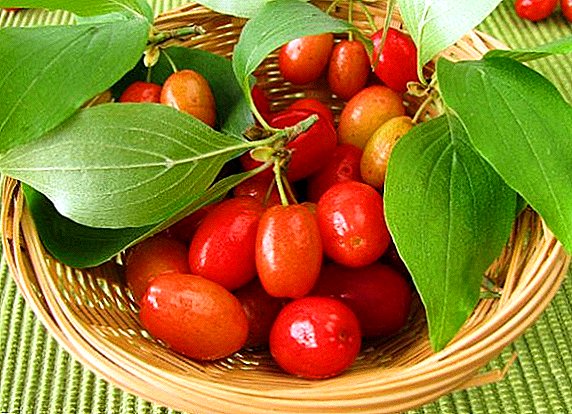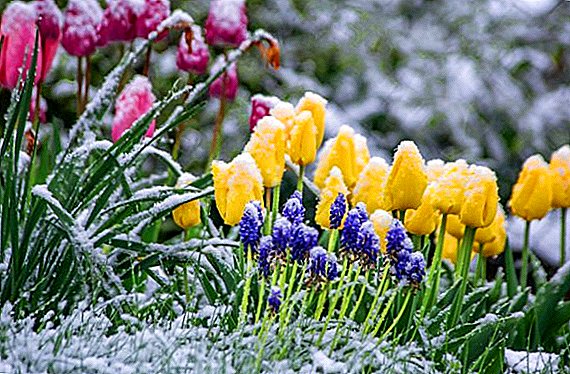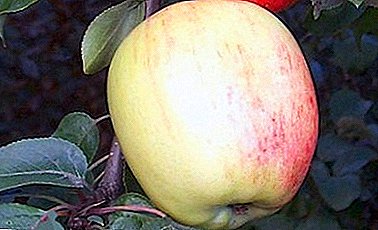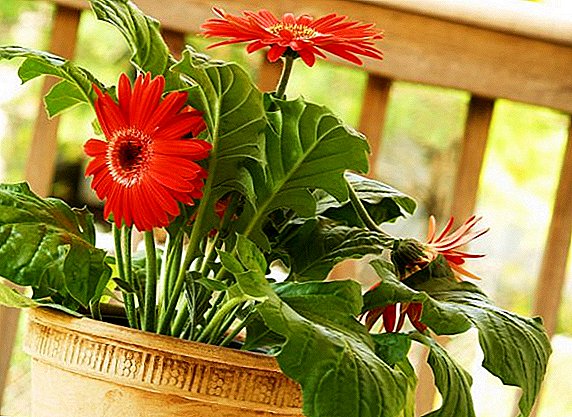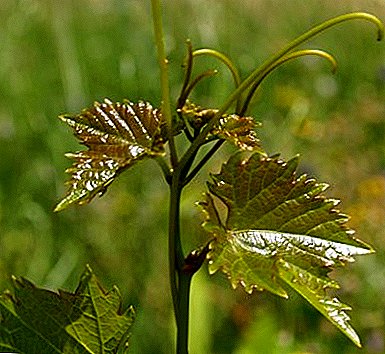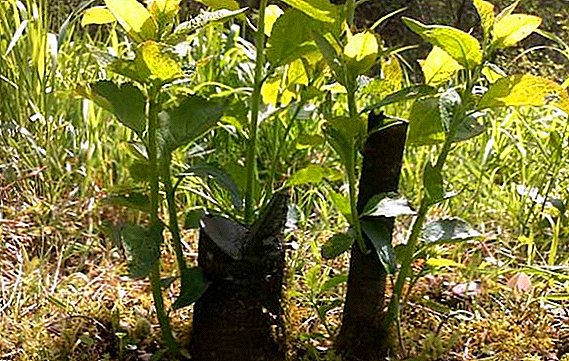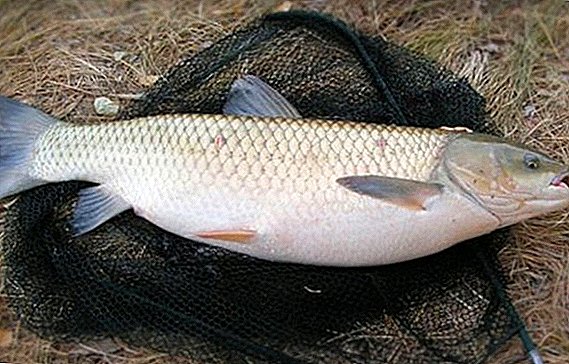 The white carp is good for everyone, it’s also a grass carp: its white meat is tasty, it grows quickly, the overgrown ponds cleanse the algae. But this "Chinese immigrant" does not want to multiply in the natural environment of Europe. That is, our natural conditions for it are unnatural and therefore man comes to the aid of fish in the delicate matter of procreation.
The white carp is good for everyone, it’s also a grass carp: its white meat is tasty, it grows quickly, the overgrown ponds cleanse the algae. But this "Chinese immigrant" does not want to multiply in the natural environment of Europe. That is, our natural conditions for it are unnatural and therefore man comes to the aid of fish in the delicate matter of procreation.
White carp: fish description
This purely herbivorous fish from the carp family can grow up to 120 centimeters in length and make weight up to 40 kilograms.  Outwardly it looks elegant, having an elongated and not compressed on the sides, like a carp, the body has a greenish-yellowish-grayish color on the back and a noble dark golden shade on the sides. Scales in Cupid edged with dark color throughout the body, except for the bright abdomen.
Outwardly it looks elegant, having an elongated and not compressed on the sides, like a carp, the body has a greenish-yellowish-grayish color on the back and a noble dark golden shade on the sides. Scales in Cupid edged with dark color throughout the body, except for the bright abdomen.
This fish comes from Chinese rivers in the Amur basin, where its main breeding grounds are located. In Europe, Cupid spawns in natural conditions only in the lower reaches of the Volga and the Don.
Grass carp feeds on grass, both underwater and above water, gladly eating meadow grass, especially for clover, specially mown for it.
Did you know? The cyprinid family, which includes the grass carp, lives throughout the land, with the exception of Australia and South America, and has over 2,300 species, with a few dozen newly discovered species added annually to this number.

Purchase fry
Since the grass carp, while living in ponds, does not reproduce on its own, it is necessary to replenish its thinning due to trapping. The easiest way to do this is by buying fry.
Learn about carp breeding, as well as fish smoking technology.On the Internet, for example, you can find dozens of ads from fish farms with offers to sell fingerlings or two year old grass carp with delivery to the buyer.
Know how to choose fry:
- the mass of a youngster growing up under favorable conditions reaches 40 grams, and a two-year-old already has 600 grams. From this and should proceed when you acquire fry;
- their number is determined by the size of the pond and the density of its stocking, which the host assumes. The more abundant the vegetation in the pond, the greater the density of planting should be;
- in fish farms, fry are fed so that they grow faster, therefore it is extremely important that feeding is carried out exclusively with natural feeds without harmful impurities;
- Attention should also be paid to the fact that the environmentally clean places are located ponds in which fry are raised;
- sellers must have documents confirming the health of the fish being sold.

Reaching puberty
Under natural conditions, willingness to spawn in grass carp appears at 9-10 years old when it reaches a body length of 68-75 centimeters.
Conditions of detention
The decisive conditions for the attainment of sexual maturity of this fish are the water temperature and the availability of adequate nutrition. Cupids love warm water, so the temperature of about 26-30 degrees is optimal for the speedy achievement of maturity and readiness for spawning.
The abundance of plant foods also stimulates sexual maturity. Therefore, you should add mown above-ground grass to underwater vegetation, especially in the form of alfalfa and clover. You can give herbal carp and dry feed. 
External modifications
With a long-term water temperature of 20 degrees, females and males of Amur begin to show secondary sexual characteristics, by which they can be easily distinguished from each other.
In males, the abdomen remains firm to the touch and flat, it clearly shows a rash in the form of small pearls, while in females the belly becomes fat, soft, and a reddish swelling is observed in the anal fin area.
Growing process
Since white carp cannot reproduce outside its natural habitat, a person is forced not only to help him reach sexual maturity, but also to take control of the spawning process, that is, to prepare fish for it and directly artificially inseminate.
Did you know? Carp is the ideal food for all lovers in Italy.

Pituitary injections
To stimulate the process of artificial spawning, injections of extracts taken from carp or carp pituitary are used. Per kilogram of live weight of the male must take 2 milligrams of hood, and the females - 4 milligrams.
Moreover, females are injected twice: the first time - 10 percent of the required dose, and the second - the remaining 90 percent.
Then a day later, the process of straining the eggs and sperm in fish takes place. Since cupid is a big and strong fish, this operation should be carried out together, holding the fish by the head and tail. Extremely sensitive caviar should be handled with extreme care, placing it in a wide plastic bowl. 
Insemination and incubation
Just as carefully it is necessary to carry out insemination by mixing eggs with 4-6 milliliters of sperm, using a goose feather for this. After that, water from a pond in the amount of 150 milligrams per liter of caviar is poured into the caviar, and a minute later another 100 milligrams are added.
After five minutes, this water should be drained, and the eggs should then be washed until it starts to swell.
When it swells noticeably, it should be thoroughly rinsed again in a wide basin so that it loses its stickiness.
And after an hour and a half, when the eggs swell up to the size of a pepper pea, the eggs should be placed in the Weiss apparatus, where it will continue to swell for another four hours. Water in the apparatus should flow at a speed of at least half a liter per minute. 
Larvae hatching
Only from 70 percent of the eggs placed in the apparatus of Weiss, the larvae hatch as a result. They must be placed in a plastic mesh cage with small cells with a cross section of less than a millimeter. The cage is located in a reservoir with a small speed of water movement.
The next day after the birth, the larvae stay at the bottom, and due to the lack of oxygen, many of them die. These dead larvae, as well as the shell of caviar, should be immediately removed from the tray.
A day later, the surviving larvae already know how to stay in the water column. Depending on its temperature, they are usually still kept in such conditions for six to three days, until they can keep themselves horizontally and intensively fed.
After that it is time to go to the tray in the pond. At the same time, the plastic net should be thoroughly cleaned at least twice a day so that nothing inhibits the free circulation of water. 
Feeding the larvae
The natural food of the larvae in this period is zooplankton. However, if it is not enough in the pond, then you have to resort to feeding the future fish. The most nutritious mixture for this is obtained from very well-grated curd, yolk of boiled eggs and dried cyclops.
One milliliter of this feeding is enough to feed 100 thousand larvae.
Important! Larvae are extremely dangerous predatory insects living in the water of the pond. Therefore, the cleaned pond should be filled with water only shortly before the placement of the larvae in it, but with the expectation that the smallest plankton could appear in it.
Conditions of detention
Up to three hundred larvae can be planted per square meter of pond, and special ponds themselves for these purposes are usually made from one hundred to two hundred square meters.
Learn how to make a pond for geese and ducks with your own hands.

Fry
When in about a month the larvae grow to three centimeter fry, they are transplanted into larger ponds ranging from five hundred square meters to five hectares. Here, the stocking density is about 50 fry per square meter. 
Adult
The living space for adult grass carp is mainly determined by the amount of green mass growing under water. At moderate scales of underwater vegetation, a maximum of two adults per square meter of green mass should be maintained for the full existence of fish. 
What to feed: food
The feeding of cupid depends on the age of the fish, the temperature of the water and the amount of underwater vegetation in the area of its stay. From the same depends on the level of feeding a person.
Malek (fingerlings)
Even when zooplankton in the water is quite enough, the fingerlings still need to be fed. At the age of five days, soybean mixtures or compound feeds specially manufactured for fry are used for this. Feed once a day.
Important! Top dressing must be on the surface of the water, not to sink and not to be carried away by the flow.
Having reached the size of six centimeters, fry begin to eat vegetable food, as well as adult individuals. With a strong stocking or with poor underwater vegetation, they need to be fed with mowed grass and mixed feed. 
Adult
Adult cupids feed on plant food. If, at a water temperature of 20 degrees, the grass carp eats up the amount of green mass, which is from 60 to 120 percent of its body weight, then such a fish landing is considered normal.
When these proportions are violated, the fish should be fed. A four-daily daily feeding should be three to four percent of body weight.
Find out which plants are suitable for your pond and how to choose them.In the form of additional feed, you can use grass mowed on meadows and fields, as well as traditional carp feed mixtures.
Feeding grass carp on the plot: video
Prevention of diseases, parasites and diseases
With an excess in the diet of grass carp feed and lack of aquatic vegetation in fish occurs metabolic disorder, from which it dies. For the prevention of this disease should be given to fish with more greenery and less feed.
The main cause of diseases, viral and fungal infections of brachiomycosis or saprolegnosis, parasitic infections and gill necrosis occurring in the cupids is a dysfunctional environment.
To prevent these problems, you should:
- stocking your reservoirs with exceptionally healthy fry;
- keep these reservoirs clean;
- regularly check the health status of individual adults;
- If you suspect any disease, immediately contact the veterinary services.
 It is beneficial to breed white carp from all sides: both in terms of healthy and high-quality nutrition when using fish for food, and financially when breeding it for sale, and to free its pond industry from algae overgrowing, and as a convenient "neighbor" for living in carp ponds.
It is beneficial to breed white carp from all sides: both in terms of healthy and high-quality nutrition when using fish for food, and financially when breeding it for sale, and to free its pond industry from algae overgrowing, and as a convenient "neighbor" for living in carp ponds.Feedback from network users
A pretty good choice for industrial breeding. White Amur fast-growing fish. In terms of food, the White Amur is a herbivorous fish, in the first year of life it prefers higher aquatic vegetation, later it switches to elodea, rdesty, hornolodnik, urut. From the land favors alfalfa, cereals and clover.vdv35
//forum.rmnt.ru/posts/138718/
White Cupid, even run into the pond to clean it. The period of activity of the White Amur May-October. When there is not enough food in the pond, mow the grass and throw it into the water. Sometimes they are bred together with carp, as they are not competitors in feed.edyardM
//forum.rmnt.ru/posts/338340/


